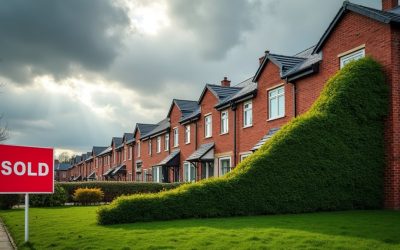
Over the years we have seen numerous trends emerge in the housing market, one of which is a growing appreciation of wood flooring. There are a number of issues with traditional wood flooring such as warping, chipping, sturdiness and the circulation/conducting of heat. However, there is a new option for private landlords looking for a quality finish offering exceptional value for money. That option is…..engineered wood flooring.
What is engineered wood flooring?
The best way to describe engineered wood is compressed layers of timber which combine to give durability and a high quality finish to your home. Incorporating the traditional tongue and groove/click to fit system, this type of flooring is extremely easy to fit. For those seeking value for money, engineered wood flooring ticks all of the boxes.
The layers are structured in a perpendicular manner which adds to their strength, durability and protection from warping. The bottom layer usually consists of softwood, high density fibre board or plywood, all of which are extremely strong and durable. The top layer is a high finish wood veneer which can consist of an array of different types of wood. Some of the popular choices include oak, walnut and acacia to give you just three examples. In essence, whatever colour and whatever texture of flooring you require there will be a type of wood to suit this.
Choosing the right size for your property
As you will gather, the final layer of high quality wood finish is the one that gives the look and feel to your property but also the one which is susceptible to wear and tear. As a consequence, engineered wood flooring comes in an array of different sizes from 10 mm up to 20 mm thickness. This type of wood is especially popular in HMOs where there tends to be more wear and tear because of higher than average footfall. The next question, how thick is the wear layer?
On average, a 10 mm thick length of engineered wood flooring will have a 2.5 mm wear layer which increases to 6 mm with the thicker lengths. There is a common misconception that because we are talking in millimetres these layers of wood will not last too long. However, these are hard wearing durable woods which offer extremely good value for money.
Removing scratches
To give you an example of the durability of engineered wood flooring, the 6 mm wear layer as detailed above can be sanded and refinished up to 7 times without any reduction in quality. When you look at other tongue and groove/click to fit types of flooring, very few even offer the option of sanding/refinishing. So, while the cost of engineered wood flooring is often greater than traditional flooring, it is the durability and sanding/refinishing which creates the value for money. Indeed, good quality engineered wood flooring will also retain a significant sell on value.
So, properties with high footfall, floors susceptible to scratching and damage are the perfect environment for durable, long-lasting engineered wood. The fact that he wood is built layer by layer ensures that consumers have a choice about the very important top layer.
Also good for the environment!
Due to the way in which engineered wood flooring is manufactured it is more environmentally friendly than other forms of wood flooring. The structure of engineered wood ensures that there is minimal wastage meaning a reduction in the number of trees required. As we touched on above, this type of flooring also offers an improvement on traditional flooring when it comes to circulation and conduction of heat. In other words, reduced energy bills and greater heat retention, surely a win-win?


